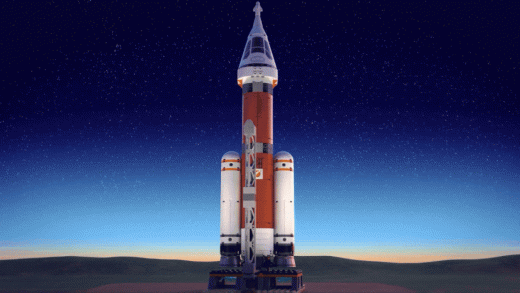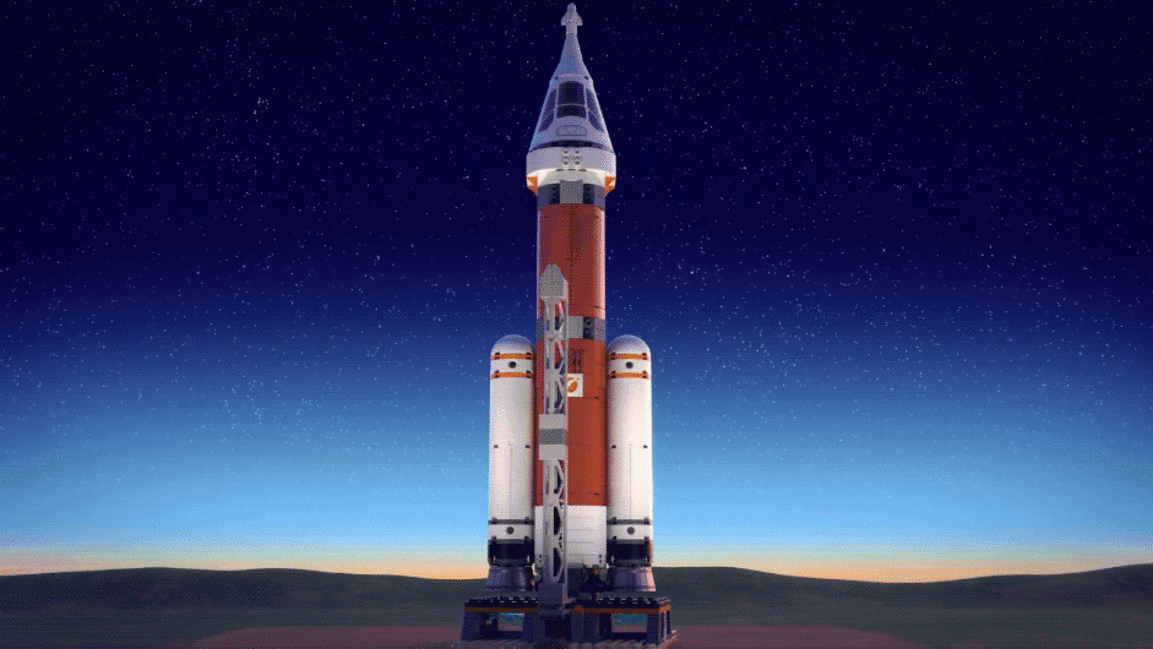These NASA Lego figures are getting kids excited about careers in science
Most of the students who Mindy Bissett teaches in schools around Little Rock, Arkansas, live along the poverty line in a limited world that often stops at the banks of the Arkansas River. So, the idea of becoming a NASA engineer can feel like science fiction.
Yet, three times a week, Bissett guides third- and fourth-grade students through lessons in rudimentary robotics, engineering design, and space science that has them attempting spacecraft models with Lego build kits featuring modest electronics and computer coding. The lessons kick off with 15-minute videos hosted by animated Lego Space Team characters Kate and Kyle, a command pilot and mission specialist, alongside interviews with actual NASA engineers and mission footage.
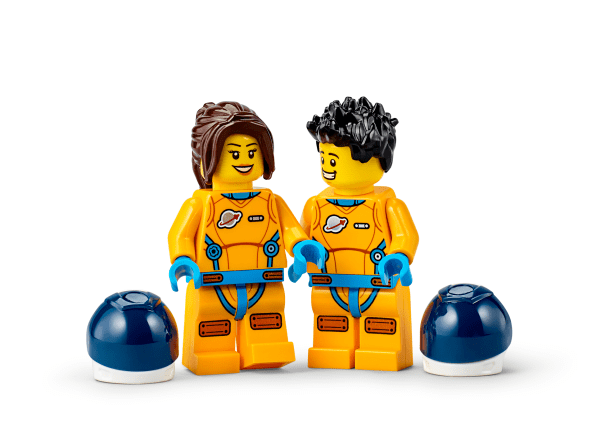
The kids were immediately hooked. “I love all this space stuff. I’m going to be an astronaut one day!’” Bissett recalls an exuberant girl blurting out as her class crafted a rocket model. Bissett also appears in two of the videos, which garnered major space cred from her students. “When you think of them being 8 and 9 years old, they are the ones who will be going to the moon and Mars. Building that excitement and sparking curiosity in elementary school is very important, because if you wait, the science and math get a lot harder,” she says.
The experiential curriculum and resource guide, Build to Launch, is a new elementary and middle school initiative from Lego Education, the toymaker’s childhood learning products division, and NASA. It teaches problem-solving while exposing students to an array of STEM and STEAM (science, technology, engineering, math, arts, and science) jobs required for both space missions and more earthbound arenas. The program released in September in anticipation of the upcoming test launch of NASA’s Space Launch System (SLS) mega-rocket, which will one day return humans back to the moon as part of the Artemis missions.
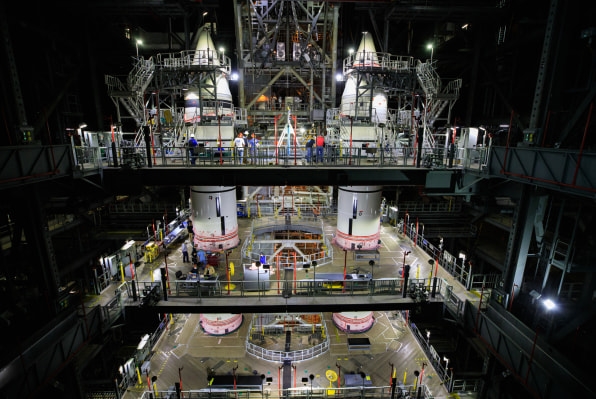
In honor of National STEM/STEAM Day on November 8, Lego Education is turning up the excitement—announcing plans to send its Space Team figurines aboard the SLS when it launches in February. “When the kids learn that Kate and Kyle are going to space, they’re going to scream,” says Bissett.
Kate and Kyle are hardly the first Legos in space. But their flight ties into ramped-up efforts to engage young people in STEM in a more enduring way.
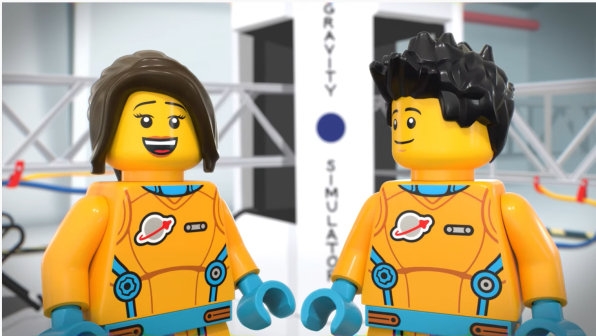
“Partnering with Lego is not new, but what’s different this time is the real educational content that Lego has brought,” says Mike Kincaid, associate administrator of NASA’s Office of STEM Engagement. “In the past, it’s been, ‘Here’s a product that’s going to fly onboard the space station or space shuttle. And isn’t that fun?’ This time it’s, ‘What are you trying to accomplish, and what do you want the student to know?’”
The space focus is less about NASA recruiting and more of an enticing entrée to the variety of STEM careers that exist in everyday life. “As a country, we’re really suffering when it comes to the STEM workforce,” Kincaid adds. “How do we build up the national workforce in STEM [as a] competitive advantage for our country?”
Flexible lessons, Lego optional
The 10 interactive lesson plans are unfolding over as many weeks through November 16 and will remain available on YouTube. The videos feature Kate and Kyle and the Lego Space Team, a cadre of Lego engineers and scientists sporting unique personalities and outside interests, who invite students to help solve actual mission problems in an inclusive environment as they build toward launch. The videos intersperse prompts for classroom discussion and interviews with an array of racially and gender-diverse NASA scientists and engineers. One of the Lego characters uses a wheelchair. Teachers can modify lessons according to ages and abilities; assignments can utilize, but don’t require, the build kits (known as Lego Education classroom solutions), which range from $70 to $340.
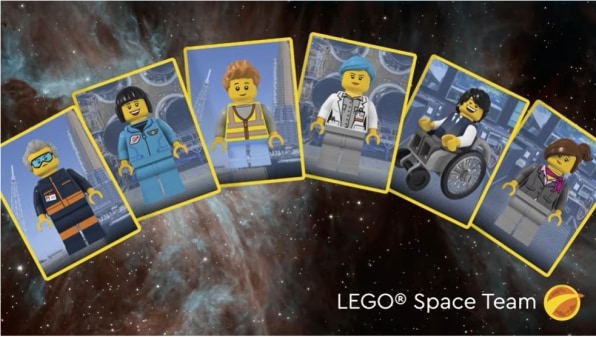
Classes can view one another’s solutions on social media using the #buildtolaunch hashtag.” We wrote and designed it to be very open for students to think about their own ideas and create, and not limit any opportunities for students who might not have our materials,” says Jenny Nash, Lego Education’s head of education impact U.S. “We’ve also envisioned that teachers might do this in different ways in their classrooms.”
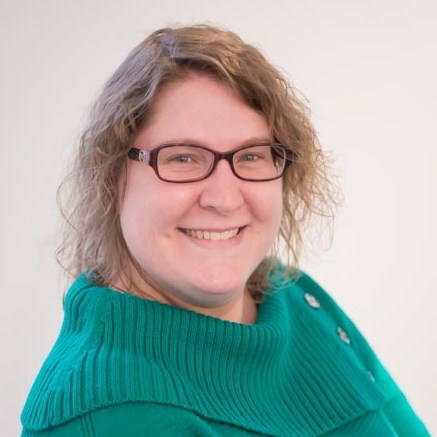
[Photo: courtesy of Lego]
Most lesson plans focus on challenges posed by the SLS launch, such as moving a rocket to the launch pad or landing on a target. Others incorporate actual obstacles from other missions, such as preventing helmets from filling up with water during spacewalks, or overviews of major operations, like the James Webb Space Telescope, which launches on December 18. Along the way, students learn about problem-solving, critical thinking, researching, and teamwork.
Lego Education developed the Build to Launch series, in part, using research by the Lego Foundation, the arm devoted to social good, which found that hands-on and play-based learning increased student engagement and retention, as well as improved social skills. NASA brought a shared mission of enabling students to succeed—through participatory learning opportunities, real-world experience, and exposure to different careers—to become future leaders and builders, says Nash: “We spent a lot of time thinking about how to expose students to more than just the career of being an astronaut.”
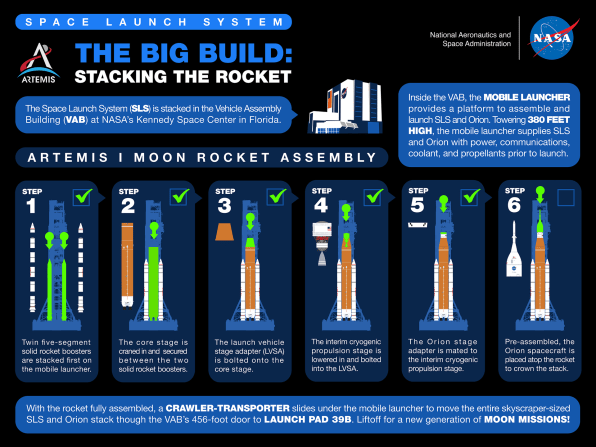
Curriculum flexibility enables jumping-off points. In Bissett’s class, a lesson about autonomous vehicles sidetracked to a discussion about sensors, googled videos of Mars rovers and 3D models, and a workshop on how to use rulers and compasses. When she found out a student’s family emigrated from Mexico, she talked about Diana Trujillo, who spoke no English when she moved from Columbia to the U.S. and went on to become a Mars rover engineer.
As the SLS moves closer to launch, Bissett plans to adapt the lessons for yet another class, this time for fifth graders. She hopes their sparked imaginations and newly acquired skills begin a journey that makes reaching the moon as possible as crossing the Arkansas River.
(40)

